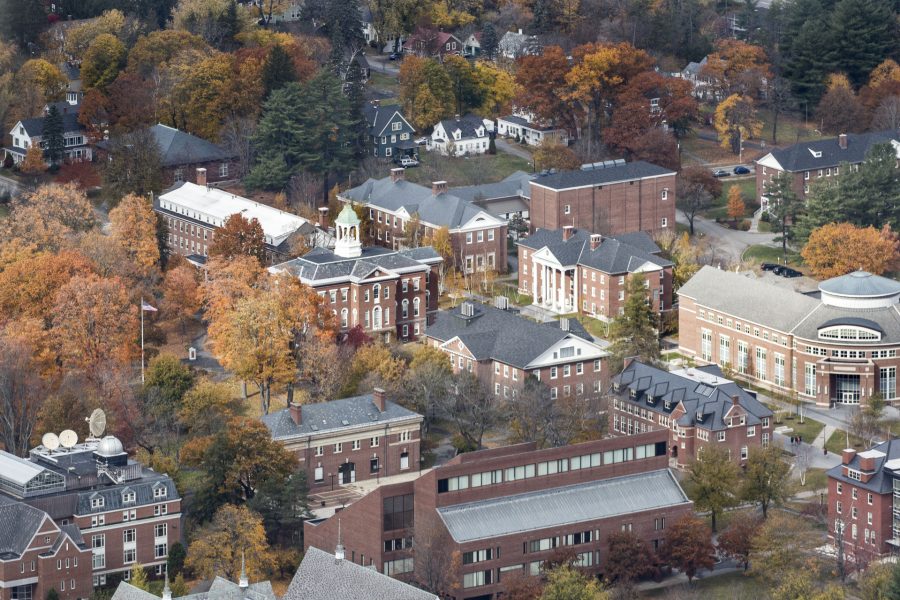
Never underestimate the power of chance encounters.
Case in point: This summer, Bates is taking a big step forward in its ability to track the use of electricity on campus. And most of the credit goes to a Bates IT staffer and a handful of students who just happened to be in the right places at the right times.
Until now, Bates energy manager John Rasmussen has analyzed the electricity usage in each of 28 Bates buildings by downloading raw data into spreadsheets. It’s a cumbersome process that takes lots of time and repetition, to say nothing of all the 11-by-17-inch printouts needed for annotating the data.
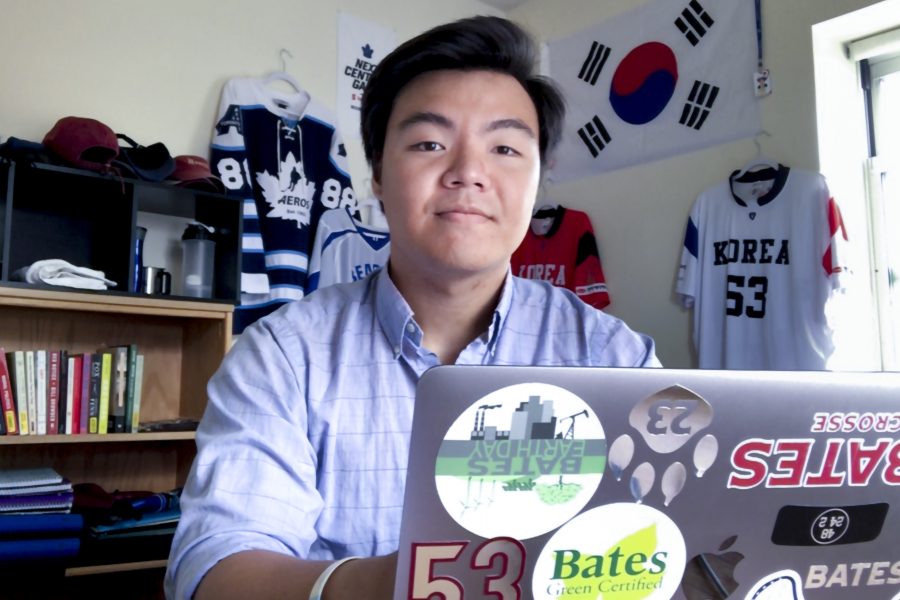
Now, thanks to the efforts of that student-staff team, Rasmussen can simply call up a dynamic online graph, capable of instantly depicting electrical draws for a given building in increments as fine as 15 minutes or as large as several months.
Straightforward and reliable, the setup is “very helpful in understanding where all this energy’s going,” Rasmussen says, “and where the opportunities might be to make it more efficient.” And it’s key to his larger goal of being able to comprehensively monitor, manage — and ideally, through consciousness-raising as well as technical upgrades, reduce — campus consumption of both electricity and fuel for heating buildings.
“This is a great project because it lets us see things that were invisible previously,” says Bates sustainability manager Tom Twist. “We can see in real time what the buildings are doing — for instance, if we’re heating a building to its full capacity at 2 a.m.”

“If you’re not in the business of energy management, it’s hard to understand the value of being able to quickly visualize energy-use data,” says Rasmussen. His analytical work incorporates not only electrical usage data, but data reflecting the effectiveness of Bates’ campus heating plant in each building that it serves.
Rasmussen adds that it would have cost Bates tens of thousands of dollars to purchase the commercial equivalent of the product put together by Maureen Haining, a Bates programmer analyst, and five students. He says, “They are pretty sharp kids.”
So what about those chance encounters? A few years ago, Twist made a presentation to Information and Library Services staff. Haining was there, and it came out that she and Twist live near each other up the Maine coast. So they started carpooling to Bates.
One of their commuting conversations involved Rasmussen’s travails with the electrical-usage data and the efforts of Bates EcoReps — students overseen by Twist who undertake sustainability initiatives — to help with that. Long story short, Haining started working with the EcoReps, including some tutoring in the use of Python, a popular and powerful programming language.
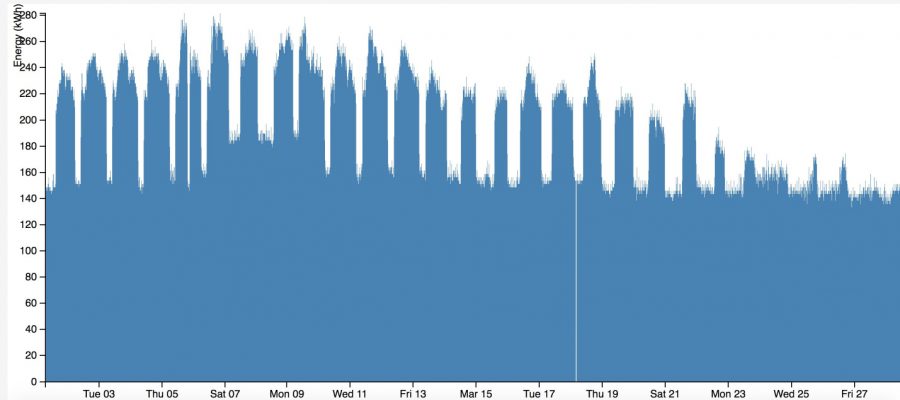
They got as far as creating a way to depict static snapshots of electrical draw, an improvement over the printed spreadsheets, but not ideal.
Fast-forward to winter 2020, when Haining began teaching “Programming for Data Analysis and Visualization,” a one-time Digital and Computational Studies course based largely on Python. (Perhaps reflecting how DCS has elevated awareness of the power of data at Bates, digital resources like Python and R no longer seem as occult to casual observers as they once might have.)
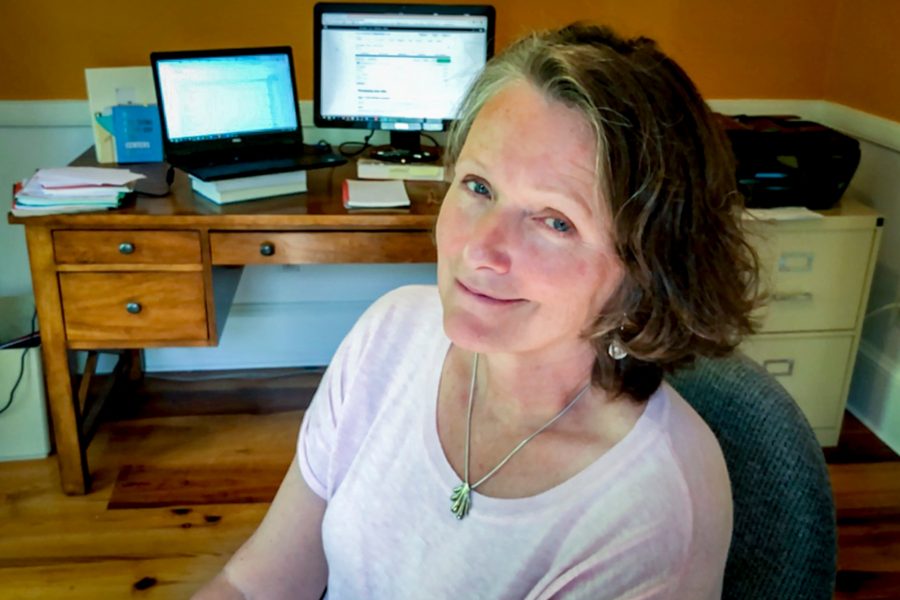
And therein lies the other random encounter. It soon became clear that three seniors in the course — Leo Crossman, Fahim Khan, and Avi Brach-Neufeld — already had considerable know-how in the snake-named programming language. (Also involved in the project are two EcoReps, Biruk Chafamo ’22 of Addis Ababa, Ethiopia, and Kyung Phil Ko ’22 of Ontario.)
“They were doing very well, and were very helpful in the classroom with the other students,” says Haining. In fact, the three let on that they’d taken the course mostly because they needed the credits. “So I said, ‘Well, then, I have a project for you.’”
Crossman, Khan, and Brach-Neufeld teamed up with the EcoReps, specifically that organization’s Data Group, to help with the electrical usage project. Haining’s three “learned a whole new set of skills for visualization,” she says. “Fahim had a strong interest in that. Avi leveraged his Python skills to package up and deploy a production level Python application. Leo was very good with JavaScript and knew about web development.”
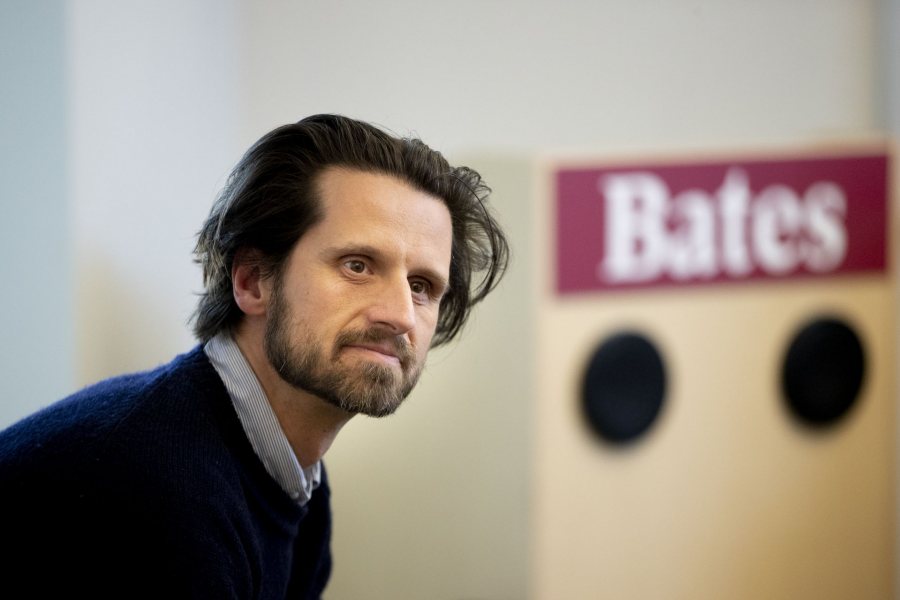
She adds, “In all, they worked extremely well as a cross-functional team.”
“It was a good opportunity to work on a real-life coding project as part of DCS course work, and I was excited to do it,” says Khan. A physics major from Dhaka, Bangladesh, Khan starts work this summer as a software developer at Tyler Technologies in Falmouth, Maine.
A knotty problem Haining’s team confronted is that the raw data from the electrical submeters is not “clean” — that is, there may be gaps, spikes, or other anomalies in the data, which emanates from the submeters as data pulses that are stored on a server. (Steam-heat data is even quirkier.)
“The students automated the process of cleaning the data,” says Twist, “as well as creating that easy visualization tool so that anyone can go in and look at the data, and know pretty quickly if the buildings are behaving the way we wanted them to.”
“They are really bright, motivated kids,” Haining says, “and they’re really good” with the technology.
But Haining deserves a share of the kudos, too, Twist says. “Maureen did a really nice job of shepherding them through all the potential pitfalls and problems that could have just stopped everything cold.”
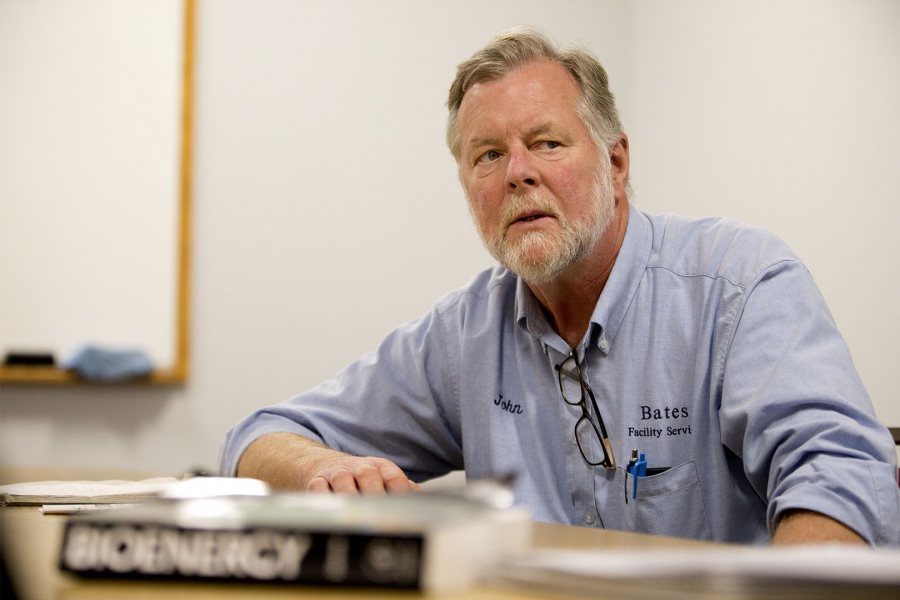
One of the two EcoReps engaged in the project most recently, Kyung Phil Ko is a member of the EcoReps’ Data Group. For him and the EcoReps overall, he says, applying data analysis practices to electrical consumption “provides valuable insights into larger systemic issues, such as how buildings use an unexpected amount of energy, and cultural issues, like peak energy usage driven by our insatiable demand.”
Those insights can inform how another EcoRep working group, its Media Group, shapes its campus messaging about conserving electricity, as well as “what capital investments we ought to recommend” for a third group, Energy Solutions. That’s a particular interest for Ko, whose sights are set on a career in financial initiatives that support sustainability.
The project overall “was definitely a valuable learning experience,” says Brach-Neufeld, a physics major from Silver Spring, Md. Brach-Neufeld, who will start a position as a developer at healthcare software manufacturer Epic Systems in August, did the Python coding that cleans the electrical-use data.
“In addition to the pure programming knowledge I gained, it was the first time I had delivered a final product,” he says. “Previously, all of my programming experience had been primarily for my physics research or my own enjoyment. Although it was a challenge, I learned a lot about how to make my programming user-friendly and professional.”
For Ko, the exposure to programming was fun and beneficial. But more important, he says, “the soft skills I learned — to become more comfortable with uncertainty, particularly in the beginning, and relationship management — are what I’m going to take away the most. Perhaps I would have been more stressed in the past few months if I didn’t have this project to learn such skills.”
